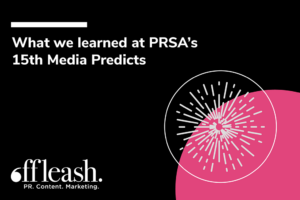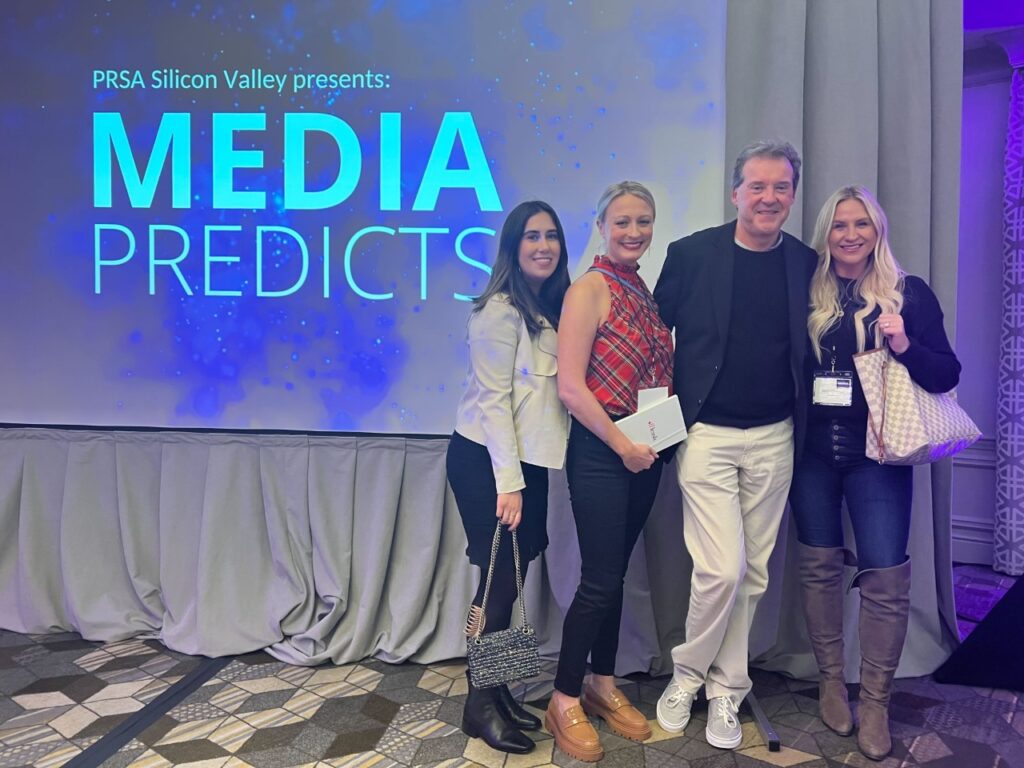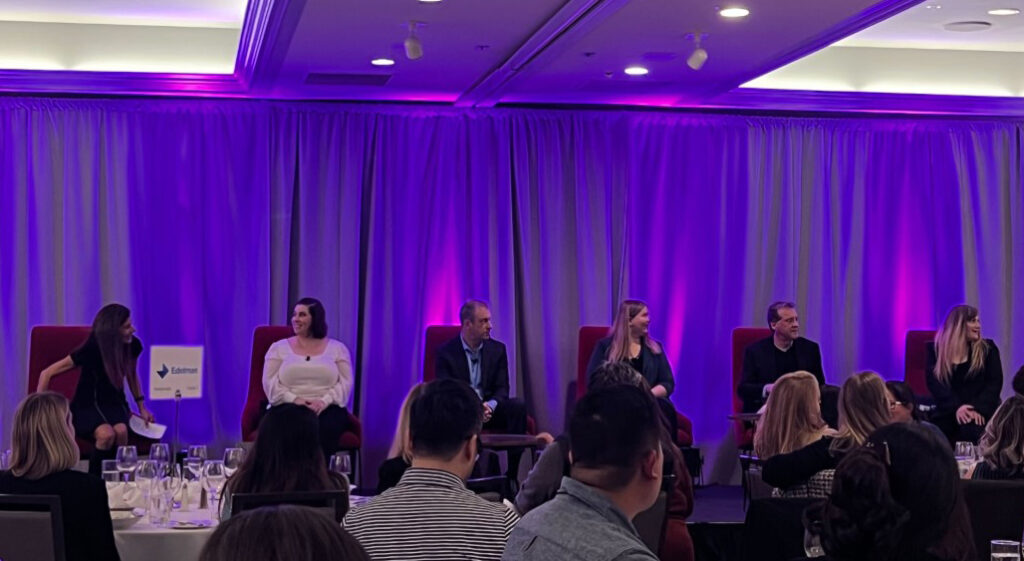What we learned at PRSA’s 15th Media Predicts

Despite today’s healthy pipeline of provocative headlines, the media industry is experiencing a great deal of change and uncertainty.
To learn more about how PR plays into the evolving media landscape, we attended PRSA Silicon Valley’s 15th annual Media Predicts event to hear technology reporters reflect on trends from this year and share their predictions for 2023.

Moderated by Shernaz Daver, operating partner and CMO at Khosla Ventures, with participation from Martine Paris, tech and entertainment reporter at Bloomberg; Jon Swartz, senior reporter at Dow Jones; Biz Carson, former VC and startups reporter at Protocol; Scott Budman, tech and business reporter at NBC Bay Area; and Sara Bloomberg, startups and VC reporter at SF Business Times, here were the key takeaways:
#1: Less means more ink
It’s no secret that the media landscape—and the profession as a whole—has been contending with challenges like layoffs, lower budgets, and less resources for some time now. As a result, reporters are frequently jumping between beats and publications and under pressure to produce more, faster.
This has created an opportunity for PR professionals to jump in as reliable resources to help the media meet these new demands. So, what do journalists need? They need poignant stories that appeal to, and have clear benefits for, the publication and the reader. PR professionals need to deliver well-packaged stories that satisfy these requirements.
#2: Transparency and trust
According to the panelists, this year’s most memorable stories were the Elizabeth Holmes criminal trial and Elon Musk’s Twitter acquisition. These stories not only attracted large readership followings, but also instilled a new skepticism in reporters when it comes to trusting sources.
To foster more trust, PR professionals need to be transparent with the media and coach their clients to be open and honest with reporters about everything: the good, the bad, and the ugly. Prioritizing transparency will help build trust and working relationships with press by allowing them to do honest, investigative work.
#3. What’s working? What’s not?
The panelists also shared their best advice for PR professionals regarding how to work with media successfully. First, they noted that “exclusive” must really mean exclusive, and not only partially exclusive (i.e. an exclusive CEO or VC quote). Second, reporters appreciate flexibility and ample time to craft their stories and work with their editors on approvals. Get stories in their hands early! And finally, don’t ask for interview questions in advance.

It’s hard to say what the media landscape will look like in the next five or ten years. The panelists also noted that TikTok and other mainstream social outlets are quickly earning their spot in journalism. Whichever direction the media takes next, it will be critical for PR pros to do everything we can to support reporters so that their work can have the most impact.
Having attended previous PRSA events, this year’s Media Predicts felt different. There was a shared excitement and appreciation among the media panelists and PR attendees to finally be back in person and have open conversations about how our two industries co-mingle. As a media lead, I’m grateful for the opportunity to sharpen my media expertise and continue to deliver stronger, more effective results for my clients and the media alike.